News
07.03.2016
Impact of climate change on diets could cause 500,000 extra deaths in 2050

Climate change could kill more than 500,000 people a year worldwide by 2050 by making diets less healthy, new research reveals. The study published on the 2nd of March in the journal Lancet assessed the impact of climate change on diet composition and bodyweight estimating the number of deaths these two factors will cause for 155 countries. “We looked at the health effects of changes in agricultural production that are likely to result from climate change and found that even modest reductions in the availability of food per person could lead to changes in the energy content and composition of diets, and these changes will have major consequences for health,” said Dr Marco Springmann from the University of Oxford who led the study. The researchers found that unless action is taken to reduce global emissions, climate change could lead to average per-person reductions in food availability of 3.2% (99 kcal per day), in fruit and vegetable intake of 4.0% (14.9g per day), and red meat consumption of 0.7% (0.5g per day). The researchers predicted that these changes in fruit and vegetable intake could be responsible for 534,000 climate-related deaths, far exceeding the health benefits of reduced red meat consumption which will prevent 29,000 deaths. The authors said even small changes in diet can quickly add up to hundreds of thousands of deaths. The study projects that reduced fruit and vegetable intake could cause twice as many deaths as under-nutrition by 2050. The countries that are likely to be worst affected are low- and middle-income countries, mainly those in the Western Pacific region (264,000 additional deaths) and Southeast Asia (164,000), with almost three-quarters of all climate-related deaths expected to occur in China (248,000) and India (136,000). But the study also found that cutting emissions could have great health benefits, reducing the number of climate-related deaths by 29-71% depending on their stringency. According to Dr Springmann, “Adaptation efforts need to be scaled up rapidly. Public-health programmes aimed at preventing and treating diet and weight-related risk factors, such as increasing fruit and vegetable intake, must be strengthened as a matter of priority to help mitigate climate-related health effects.” (ab)
02.03.2016
Scientists call for better freshwater protection from salinity

Salt pollution of freshwaters is increasing, negatively affecting human health and freshwater ecosystems, according to an article published in the February 26 issue of the journal Science. The study, conducted by an international team of scientists, reveals that human activities such as agriculture and the extraction of resources such as coal, minerals or gas, are increasing the total concentration of dissolved inorganic salts in freshwaters. Increased salinity levels of rivers and lakes could have a negative impact on freshwater biodiversity and alter important ecosystem functions, the scientists warned. Although the number of ecological disasters caused by increasing salinity so far is still low, they have brought about large-scale loss of biodiversity and suffering for people living in affected regions. The scientists name the fisheries collapse in the Aral Sea and the limited access to safe drinking water in the Ganges delta in Bangladesh as examples. In certain regions and countries, increasing salinity of aquifers and arable land have already made it impossible to cultivate certain crops, for example in the Ebro valley. According to the study, climate change will aggravate the problem because water evaporation will increase, diminishing the capacity of rivers and lakes to dilute salts. In addition, rising sea levels will cause salt water to invade fresh water in coastal areas. In regions where food production and the provision of drinking water will become increasingly difficult, salinity may also lead to migration. Salinity can also have adverse effects on human health and lead to higher costs of water treatment for human consumption. The authors criticise that current standards to measure salinity focus solely on human uses of water, ignoring the protection of aquatic biodiversity. “In most cases these are only recommendations (not legally binding) based on the total quantity of salt (i.e. salinity), without taking into account the concentration of different ions (e.g. chloride, magnesium, sulfate, sodium, etc.),” said lead author Miguel Cañedo-Argüelles from the University of Vic and the University of Barcelona. Since different ions have different toxicity, these regulations do not adequately assess the toxicity of saline water to aquatic organisms, the researchers said. Some countries, like Australia and the United States, have made progress in regulating permitted salinity levels on the basis of ecological criteria, the scientists said, but the degree of protection is still insufficient. The authors argue that salinity standards for specific ions and ion mixtures, not just for total salinity, should be developed and legally enforced to protect freshwater life and ecosystem services. They also present measures and good practices to reduce salt concentrations in freshwaters. The recommendations include better water use for agricultural practices, less salt for road de-icing, less discharge or sequestering salts during mining operations, and stricter permits and controls for enterprises that discharge salt-rich effluents into rivers and lakes. (ab)
29.02.2016
Decline of bees and other pollinators threatens world food supply, UN warns
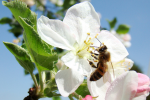
A growing number of pollinator species worldwide are facing extinction, threatening global crop production and millions of livelihoods, a UN body on biodiversity warned on Friday. According to a two-year study conducted by the Intergovernmental Science-Policy Platform on Biodiversity and Ecosystem Services (IPBES), an estimated 16% of vertebrate pollinators are threatened with global extinction – increasing to 30% for island species. In addition, regional and national assessments indicate high levels of threat, particularly for bees and butterflies, with often more than 40% of invertebrate species threatened locally. “Wild pollinators in certain regions, especially bees and butterflies, are being threatened by a variety of factors,” said IPBES Vice-Chair, Sir Robert Watson. “The decline in their populations is primarily due to changes in land use, intensive agricultural practices and pesticide use, alien invasive species, pathogens and climate change.” The authors warns that the ongoing decline in the number of pollinating insects and animals could threaten global crop production. More than three-quarters of the world's food crops rely at least partly on pollination by insects and other animals. According to the assessment, animal pollination is directly responsible for between 5-8% of global agricultural production by volume, an industry worth up to US$577 billion annually. “Without pollinators, many of us would no longer be able to enjoy coffee, chocolate and apples, among many other foods that are part of our daily lives,” said co-chair Simon Potts. Other crops that heavily depend on pollinators include mangoes and almonds. There are roughly 20,000 species of wild bees alone but butterflies, moths, wasps, beetles, birds or bats also contribute to pollination. Many of the crops that rely on pollination are an important source of income in developing countries. But according to the IPBES, there are a number of steps can be taken to reduce the risks to pollinators and the use of indigenous and local knowledge is important in this respect. These steps include the promotion of sustainable agriculture, which helps to diversify the agricultural landscape and makes use of ecological processes as part of food production. An important measure is decreasing the exposure of pollinators to pesticides by reducing their usage and seeking alternative forms of pest control. The assessment also recommends farmers to adopt ecologically friendly farming techniques, such as planting strips of wild flowers. Since pests and diseases pose a special threat to managed bees, bee keepers can reduce this risk through better disease detection and management, the authors found. The IPBES was established in April 2012 as an independent intergovernmental body for assessing the state of the planet's biodiversity, its ecosystems and the essential services they provide to society. (ab)
25.02.2016
43.7 million hectares of organic agricultural land worldwide
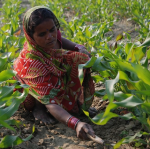
Organic farming continues to rise across the globe. A total of 43.7 million hectares were farmed organically at the end of 2014, representing a growth of almost 0.5 million hectares compared to the previous year. These are the latest figures of the statistical yearbook “The World of Organic Agriculture” published by the Research Institute of Organic Agriculture (FiBL) and IFOAM. The yearbook collects data on 172 countries reporting organic farming activities. Australia has the largest acreage of organically farmed land with 17.2 million hectares, of which 97% are used for grazing, followed by Argentina with 3.1 million hectares and the United States with 2.2 million hectares. Around 11.6 million hectares or more than a quarter of organically farmed land is in Europe. The three countries with the largest share of organic agricultural land of their total farmland are the Falkland Islands (36.3%), Liechtenstein (30.9%) and Austria (19.4%). But also Sweden, Estonia, Samoa, Switzerland, São Tomé e Príncipe, Latvia, the Czech Republic and Italy are among the countries with more than 10% of organic agricultural land. According to the report, there were 2.3 million organic farmers in 2014. Forty per cent of the world’s organic producers live in Asia, followed by Africa (26%) and Latin America (17%). As in previous years, the countries with most organic producers were India (650,000), Uganda (190,552) and Mexico (169,703). Consumer demand for organic products is also increasing across the globe. Global retail sales of organic food and drink reached 80 billion US dollars in 2014. The countries with the largest organic markets were the United States (27.1 billion Euros), followed by Germany (7.9 billion Euros), France (4.8 billion Euros) and China (3.7 billion Euros). The biggest market growth was registered in Sweden with organic sales up by more than 40 percent from the previous year. Switzerland continues to have the highest organic per capita spending. The Swiss spent 221 Euros on organic products, 57 Euro more than consumers in Luxembourg. Considering the latest figures and the continuous and sustainable growth over many years, the organic movement can look confidently into the future, the foreword to the report concludes. (ab)
22.02.2016
Bees can help improve food security of two billion smallholders, study finds

Smallholder farmers could significantly increase their crop yields by attracting more bees and other pollinators to their land, new research suggests. The study, published in the journal Science, quantifies to what degree enhancing pollinator density and richness can improve yields, which may be especially important for the two billion people who rely on small farms, many of which are undernourished. “Our research shows that improving pollinator density and diversity – in other words, making sure that more and more different types of bees and insects are coming to your plants – has direct impact on crop yields,” said Barbara Gemmill-Herren, one of the authors of the study. The scientists compared 344 fields from 33 pollinator-dependent crop systems in small and large farms across Africa, Asia and Latin America. They found that crop yields were significantly lower in farming plots that attracted fewer bees during the main flowering season than in those plots that received more visits. Their comparison of high-performing and low-performing farms of less than 2 hectares showed that small-scale farmers could increase their yields by on average 24 percent by attracting more pollinators to their land. While larger fields also benefited from more pollinator visits, the impact on yields was less significant than in smaller plots. However, attracting pollinators to farms requires some effort. Maintaining habitat and forage resources all year long is key to keeping them on the land for longer periods of time. This can be achieved by planting different trees and plants that flower at different times in the year, the scientists said. In addition, reducing the use of pesticides and maintaining flowering hedge rows around the farm and mulch on the ground where bees can hide are other strategies to attract pollinators. Since different pollinators have distinct tastes, the diversity of pollinators, each with different flight capacities, can make the difference. Bumble bees, for example, are one of the few types of bees that can successfully pollinate tomatoes, which heavily rely on buzz pollination to bear fruit. Honey bees, in turn, are less picky in their choice of flowers while wild bees are more effective in fertilizing the plants they’re attracted to. “The take away from our study is that bees provide a real service and should be taken into account when we plan food security interventions,” said Nadine Azzu, one of the authors. “And the best part is: their service is free.” (ab)
19.02.2016
Better water management could increase yields and climate resilience of farmers
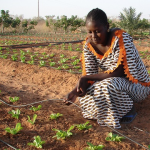
Improved agricultural water management could help produce more food with the same amount of water and buffer potential climate change impacts on crop yields, according to new research published in the journal Environmental Research Letters. The scientists analysed the worldwide potential to increase food production by improving rainwater use and irrigation. “Smart water use can boost agricultural production – we’ve in fact been surprised to see such sizeable effects at the global level,” said lead-author Jonas Jägermeyr from the Potsdam Institute for Climate Impact Research (PIK). Under a scenario described as ambitious but achievable, the use of integrated water management strategies could increase global food production in kilocalories by as much as 41%. The researchers say this could halve the global food gap, assuming that the world will need 60%-100% additional crop calories by 2050 to eradicate hunger. Although the scientists do not question these figures – the world’s farmers are already producing enough to feed 12 billion people – and do not explain how a mere increase in production will improve the access to food for the poor, they show the enormous potential of clever water management. “It turns out that crop water management is a largely underrated approach to reduce undernourishment and increase climate resilience of smallholders,” Jägermeyr said. The scientists took into account a number of very different concrete water management options, from low-tech solutions for smallholders to the industrial scale. According to the study, water harvesting by collecting rainwater for irrigation during dry spells is a common traditional approach in some regions such as the Sahel region in Africa. But it is under-used in many other semi-arid regions in Asia and North America. Mulching is another option since covering the soil with crop residues left on the field can reduce evaporation. In addition, the potential of drip irrigation has not yet been fully exploited. Especially in water-scarce regions such as in China, Australia, the western US, Mexico, and South Africa, there is a lot of potential to increase yields through better crop water management. The study also highlights the important role of water management in reducing food risks under climate change. According to co-author Johan Rockström from the Stockholm Resilience Centre, improved water management and more research in this area will be key to limiting pressure on our national resources and achieving a sustainable food future. “The recently adopted Sustainable Development Goals by all countries – while stipulating sustainable agriculture among all nations – need to be based on more evidence on how to achieve such large system changes, and water needs to be central here. Since we're rapidly approaching planetary boundaries, our study should indeed draw the attention of decision-makers of all levels to the potential of integrated crop water management.” (ab)
16.02.2016
Land degradation affects 3.2 billion people worldwide, study warns
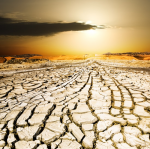
Land degradation is on the rise, affecting around 3.2 billion people worldwide, yet insufficient efforts have been made so far to ensure sustainable land use and the protection of soils. This is the message of a new book presented at a press conference in Berlin last week. An international team of scientists from Bonn's Center for Development Research and other institutions conducted case studies for 12 countries in different world regions. Their findings, which are partly based on satellite data, are alarming: 33% of grasslands, 25% of croplands and 23% of forests experienced degradation over the last three decades. About 30% of global land area, which is home to about 3.2 billion people, has experienced significant degradation. Land degradation is a serious problem in both low- and high-income countries and in both temperate and tropical regions, the scientists concluded. “If we talk about fighting the root causes of mass migration, then land degradation is an important factor. When people cannot grow their own food, they will think about moving elsewhere”, Klaus Töpfer, former head of the United Nations Environment Program, was cited by Deutsche Welle. According to the book, the global costs of land degradation amount to about US$300 billion per year, or about 0.4% of the 2007 global gross domestic product. The assessment found that the costs of doing nothing about land degradation are several times higher than the costs of taking action to reverse it: Every dollar invested in saving land and soils today will save us five dollars in the future. The poor are hit hardest by land degradation because their livelihoods heavily depend on natural resources. Africa south of the Sahara accounts for the largest share of the total global cost of land degradation with 26%. Often, there is a lack of extension services for farmers, for example about soil fertility management, the authors said. Another problem is weak security of land tenure. Several case studies showed that the adoption of sustainable land management practices is often dependent on secure land tenure. The authors therefore stressed the need for policies which protect customary tenure systems against arbitrary expropriation as well as for long-term strategies for enhancing women’s access to land under customary tenure. It is high time to take action against land degradation, the researchers said. “Sustainable land management contributes to achieving several of the Sustainable Development Goals (SDGs), such as land degradation neutrality and an ambitious climate and biodiversity agenda,” said Professor Klaus Töpfer. Goal 15 of the 2030 Agenda for Sustainable Development adopted by the UN in autumn aims at halting and reversing land degradation. (ab)
12.02.2016
Green revolution policies could be harming Africa’s rural poor, study warns
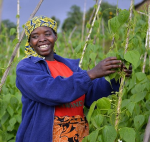
New research indicates that so-called ‘green revolution’ agricultural policies aimed at alleviating poverty in Africa could be making things worse. A study by the University of East Anglia, published in the February issue of the journal World Development, found that forcing “modern” farming practices on rural communities in sub-Saharan Africa may contribute to increased landlessness, poverty, food insecurity and inequality. The authors looked in-depth at Rwanda's agricultural policies and the changes affecting the rural inhabitants in eight villages in the country’s mountainous west where smallholders depend on the food they grow on their small plots. The two main components of this strategy are the Rwandan Land Policy and the Crop Intensification Program, which involves a rapid shift away from traditional modes of production towards specialisation in a small number of government-approved, marketable staple or cash crops with the use of new seed varieties and chemical fertilisers. According to lead author Dr Neil Dawson and his team, Rwanda’s agricultural policies are pronounced as successful in alleviating poverty and enhancing food security by the International Monetary Fund and other donors without paying attention to the negative impacts on the poorest and the perspectives of rural inhabitants themselves. The study reveals that only a relatively wealthy minority have been able to keep to enforced modernisation because the poorest farmers cannot afford the risk of taking out credit for expensive inputs, such as fertilisers. “Similar results are emerging from other experiments in Africa. Agricultural development certainly has the potential to help these people, but instead these policies appear to be exacerbating landlessness and inequality for poorer rural inhabitants,” said Dr Dawson. “Such policies may increase aggregate production of exportable crops, yet for many of the poorest smallholders they strip them of their main productive resource, land.” He said it was startling to see that policies with such far-reaching impacts for poor people are, in general, so inadequately assessed. According to the study, conditions facing African countries today are very different from those past successes with green revolution policies in Asia some 40 years ago. However, wealthy donors such as the Gates Foundation, initiatives such as the New Alliance for Food Security and Nutrition, and multinational companies such as Monsanto continue pushing agricultural modernisation in Africa - even though the mechanisms for achieving improvements in the lives of smallholder farmers through such policies are unclear. Dr Dawson and his team conclude that these green revolution policies should be subject to much broader and more rigorous impact assessments. They also recommend that measures to prevent poverty-exacerbating impacts should be incorporated into such policies. In the case of Rwanda, this means encouraging land access for the poorest and supporting traditional practices during a gradual and voluntary “modernisation,” the authors write. (ab)
08.02.2016
France passes food waste law banning supermarkets from binning unsold food

France has become the first country in the world to ban supermarkets from throwing away unsold food under a new law that requires them instead to give unspoiled food to charities or food banks. The French senate unanimously approved the bill on Wednesday, following a lower house vote last year. The legislation stipulates that supermarkets measuring 400 square metres or more are no longer allowed to destroy any unsold, but still edible products, including products which would be thrown away because they are approaching their best-before dates. Now these supermarkets will have to sign donation contracts with charities or face penalties, including fines of up to €75,000 (£53,000) or two years’ imprisonment. Food banks and campaigners welcomed the law, which was propoased last year by the former food minister Guillaume Garot. According to Jacques Bailet, head of Banques Alimentaires, a network of French food banks, the law is “positive and very important symbolically”, The Guardian reported. Bailet said it would greatly increase an already emerging trend for supermarkets to donate to food banks. “Most importantly, because supermarkets will be obliged to sign a donation deal with charities, we’ll be able to increase the quality and diversity of food we get and distribute. In terms of nutritional balance, we currently have a deficit of meat and a lack of fruit and vegetables. This will hopefully allow us to push for those products,” he told The Guardian. The French Ministry of Ecology, Sustainable Development and Energy estimates food waste to amount to 7.1 million tonnes. Wasted food costs the average French household €400 a year, and the country up to €20 billion. Campaigners now hope to persuade the EU to adopt similar legislation in all member states. A report published last year showed that in the UK, households threw away 7 million tonnes of food in 2012, enough to fill London’s Wembley stadium nine times over. Avoidable household food waste in the UK is associated with 17m tonnes of CO2 emissions annually. (ab)
04.02.2016
Organic farming key to feeding the world sustainably, study finds
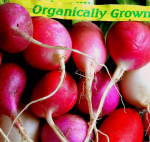
Organic farming can produce sufficient yields to feed a growing world population, be profitable for farmers, protect and improve the environment and be safer for farm workers. That is the conclusion of a large review study by Washington State University researchers, published in the February issue of the journal “Nature Plants”. The authors looked at 40 years of science comparing the performance of organic and conventional farming systems in terms of four key sustainability goals: productivity, environmental impact, economic viability and social wellbeing. “Thirty years ago, there were just a couple handfuls of studies comparing organic agriculture with conventional,” lead author John Reganold, WSU Regents Professor of Soil Science and Agroecology, said in a press release. “In the last 15 years, these kinds of studies have skyrocketed. Hundreds of scientific studies now show that organic ag should play a role in feeding the world,” he added. Although organic agriculture may in general produce lower yields, with certain crops, growing conditions and management practices organic farming comes close to matching conventional yields. Reganold and his doctoral candidate Jonathan Wachter found that “under severe drought conditions, which are expected to increase with climate change in many areas, organically managed farms have frequently been shown to produce higher yields than their conventional counterparts due to the higher water-holding capacity of organically farmed soils.” According to the authors, numerous studies prove the environmental benefits of organic production: “Aggregate studies have found that organic farming systems consistently have greater soil carbon levels, better soil quality and less soil erosion compared with conventional systems.” In addition, organic farming also creates less soil and water pollution and lower greenhouse gas emissions. In economic terms, organic agriculture proved significantly more profitable and had higher benefit/cost ratios than conventional agriculture because consumers are willing to pay higher prices for organic produce. Putting a price on the negative externalities caused by farming, such as soil erosion or nitrate leaching into groundwater, would make organic agriculture even more profitable, the review shows. “With only 1% of global agricultural land in organic production, and with its multiple sustainability benefits, organic agriculture can contribute a larger share in feeding the world,” the authors write. However, policy changes are needed to address the barriers that hinder the expansion of organic agriculture. These obstacles include the costs of transitioning to organic certification or lack of access to markets, loans and insurance, especially in rural regions and less-developed countries. But Reganold and Wachter also make clear that there is no silver bullet solution to feeding the world. “Rather, a blend of organic and other innovative farming systems, including agroforestry, integrated farming, conservation agriculture, mixed crop and livestock, and still undiscovered systems, will be needed for future global food and ecosystem security.” (ab)

